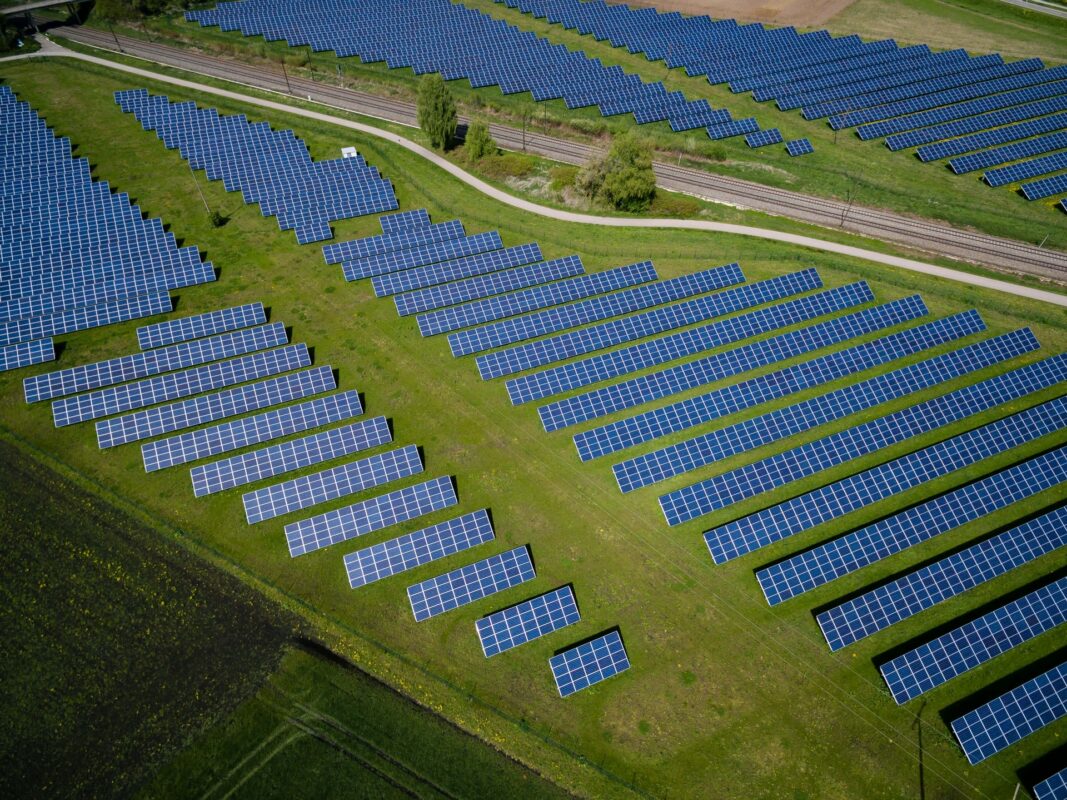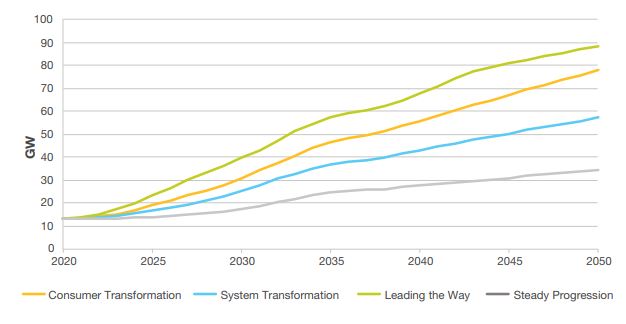
National Grid ESO’s most ambitious scenario sees solar capacity grow to almost 90GW by the middle of the century. Image: Andreas Gücklhorn (unsplash).
Continued price reductions are expected to increase the uptake of solar panels through the late 2020s, National Grid ESO has found.
In its Future Energy Scenarios (FES) for 2021, the operator explored four potential pathways to net zero, tracking electricity generation, flexibility, transport and the residential sector.
Across its four plotted scenarios solar capacity does vary substantially though, depending on factors including price reductions of the panels and electricity network capacity. In the most ambitious scenario, Leading the Way, solar reaches almost 90GW by the middle of the century, a substantial increase on FES20’s prediction.
Within this, solar is paired with flexible technologies like electrolysis to produce green hydrogen, helping to mitigate the impact of low daytime power prices when there may be too much renewable generation on the system.
However, in its slowest pathway dubbed Steady Progression – the only one of the four that would see the UK miss its net zero by 2050 target – it is closer to 35GW.

Solar generation capacity. Image: National Grid ESO.
This would see solar rolled out slower than the Climate Change Committee's most recent suggestions, which include wind and solar meeting up 75-90% of the UK’s electricity mix. This would require solar alone to generate 60TWh per year.
All of the FES pathways see domestic electricity generation increase, with both the Consumer Transformation and Leading the Way scenarios seeing ten times more solar PV – or 912MW per year on average – installed on rooftops by 2050.
In the Leading the Way scenario, energy storage capacity grows rapidly in the 2020s, relflecting the increasing amounts securing Capacity Market contracts. While the other scenarios are more modest, as the penetration of renewables increases, the need for flexible technologies sees storage – and in particular battery storage – grow towards the middle of the century.
Electricity storage capacity ranges from nearly 45GW to 20GW between the most and least ambitious of National Grid ESO’s scenarios.
“Britain is making significant progress towards achieving net zero,” said Matthew Wright, head of strategy and regulation at National Grid ESO.
“The fundamental changes outlined in our latest FES insight show just how important a coordinated approach will be between policymakers and industry if we’re to capitalise on that momentum.”
For more details on the FES21, see our sister site Current±

